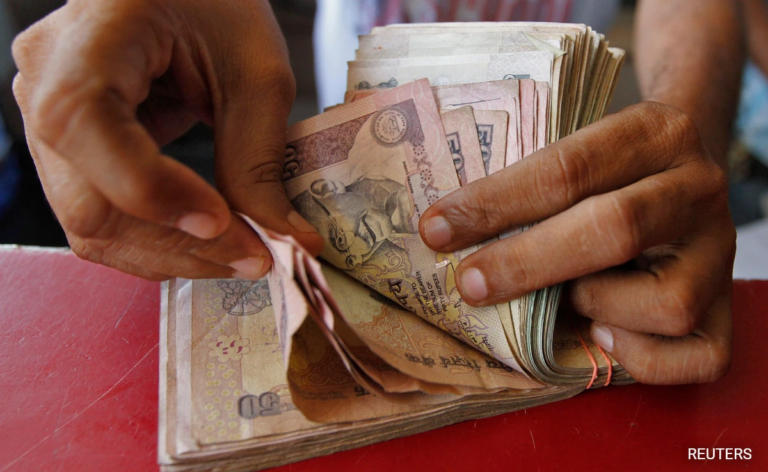
The middle class has long been seeking income tax relief. Until now, tax benefits were primarily targeted at the lower segments of the income pyramid, while those in the middle and upper tiers of the middle class remained outside the scope of any significant relief. In fact, their tax burden increased due to changes in the taxation of dividends, capital gains on equity, debt income, and more. Against this backdrop, the Union Budget provides significant relief by revamping the new tax structure, leading to an estimated revenue foregone of ₹1 lakh crore. This stands out as a major highlight of the Budget.
Inflation has been persistently high, eroding household purchasing power. This concern has frequently been raised by FMCG companies when engaging with investors. The Budget effectively provides individuals with additional financial space, and the magnitude of tax relief is large enough to stimulate a surge in consumption. Since these tax rates are expected to remain in place for some time, the resulting sustained increase in spending is positive news for consumer goods companies.
Working Within Constraints
India Inc, too, was looking for positive signals, traditionally through increased capital expenditure (CAPEX). The Budget has reinstated the capex outlay to the FY25 budgeted level of ₹11.2 lakh crore. This target appears more achievable this year, as last year’s spending was constrained by the election cycle, which delayed expenditure decisions. Some argue that more could have been done, but it is essential to recognise that government spending is bound by the revenue it generates through taxes and other sources, supplemented by borrowing. Within these constraints, the government has maximised its allocations—evident in the fact that the overall budget size has increased by 7.4% over FY25, reaching ₹50.65 lakh crore. The government has struck a fine balance between revenue forgone and essential expenditure.
This naturally brings fiscal deficit management into focus. The government remains committed to reducing the fiscal deficit to 4.5% in FY26 and eventually to 3%. The deficit had surged during the COVID-19 pandemic period, but it has been systematically rolled back. This is crucial for maintaining a stable debt-to-GDP ratio. Every budget must operate within the limits set by fiscal deficit targets, and this year’s target of 4.4% aligns with that trajectory, leading to net borrowings of ₹11.54 lakh crore—comparable to last year.
The Liquidity Factor
The borrowing programme is particularly significant as it influences liquidity conditions in the banking system. Currently, liquidity is tight, with banks struggling to attract deposits amid rising credit demand. If the government had opted for higher borrowing, it could have further strained liquidity, creating challenges for the central bank. Therefore, it was imperative to maintain borrowing at a manageable level, which has been achieved. As a result, bond yields should remain stable, minimising market volatility.
The Budget has also preserved, if not increased, allocations for key social welfare schemes, including subsidies, PM-Kisan, PM-Awas, and NREGA. This ensures continued financial support for economically weaker sections. These schemes have significantly improved the living standards of lower-income groups over the years, as reflected in the National Statistical Office’s Household Consumption Surveys.
Additionally, the Budget introduces notable policy initiatives, such as a credit guarantee scheme for MSMEs and a push for the Public-Private Partnership (PPP) model in infrastructure financing. NaBFID (National Bank for Financing Infrastructure and Development) will play a crucial role in providing credit enhancement for infrastructure projects, which will, in turn, improve their credit ratings and facilitate better access to the corporate bond market. Another significant reform is the proposal to allow 100% FDI in insurance, with the condition that premiums must be invested within India. These measures mark critical steps in addressing sectoral needs and fostering economic growth.
A particularly interesting move is the reduction in tariff rates, signalling India’s commitment to rationalising customs duties. At a time when global trade tensions are rising, particularly with the US scrutinising tariffs imposed by various countries, this step could enhance India’s standing in the global trade landscape.
Overall, the Budget is not only pragmatic but also optimises outcomes on both the revenue and expenditure fronts. It is forward-looking, extending beyond FY26 to lay the groundwork for the next five years. The broader goal is to accelerate India’s journey toward Viksit Bharat, ensuring that growth is expedited.
(The writer is the Chief Economist of Bank of Baroda and Author of Corporate Quirks: The Darker Side of the Sun Views are personal)
Disclaimer: These are the personal opinions of the author





